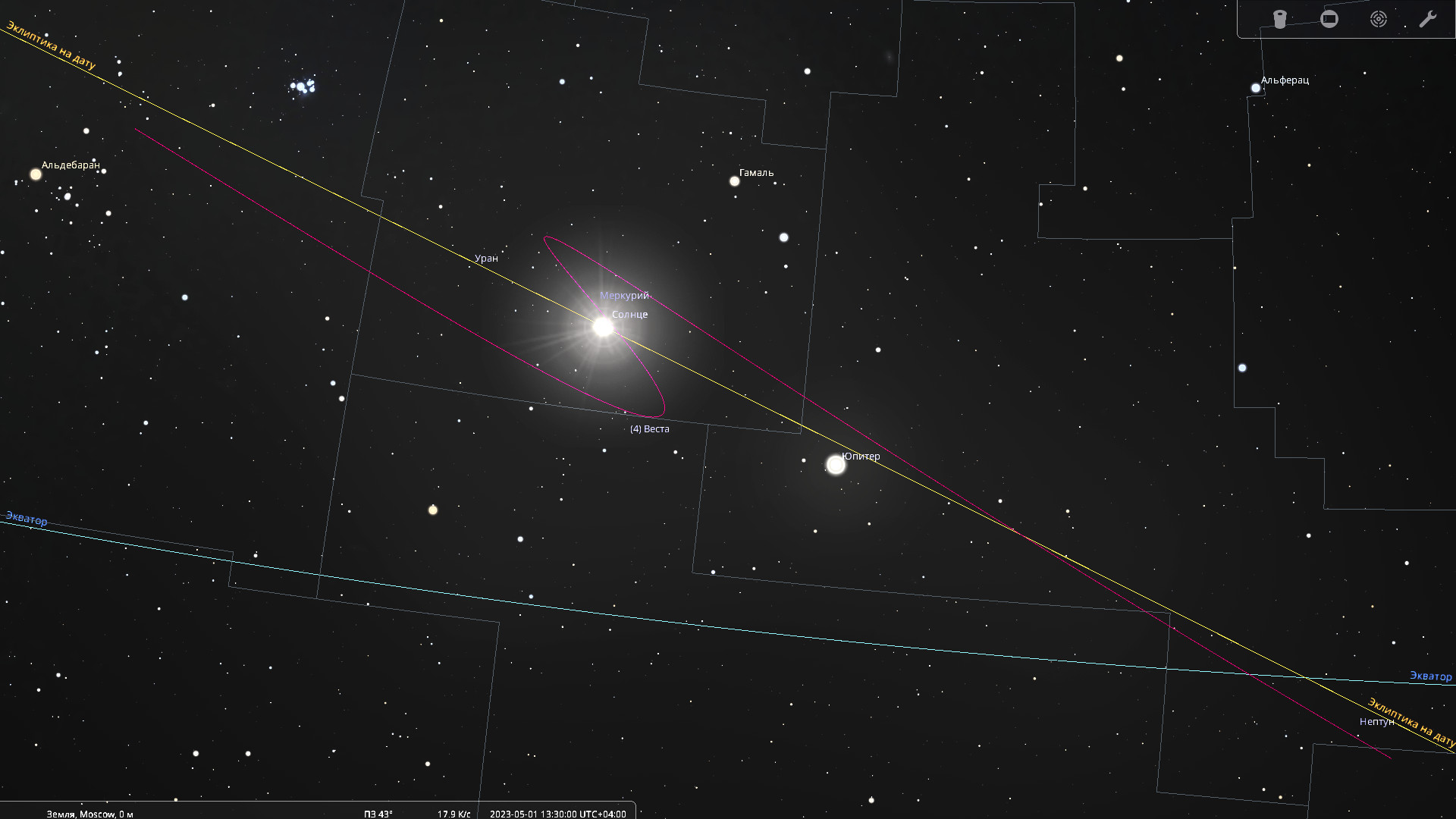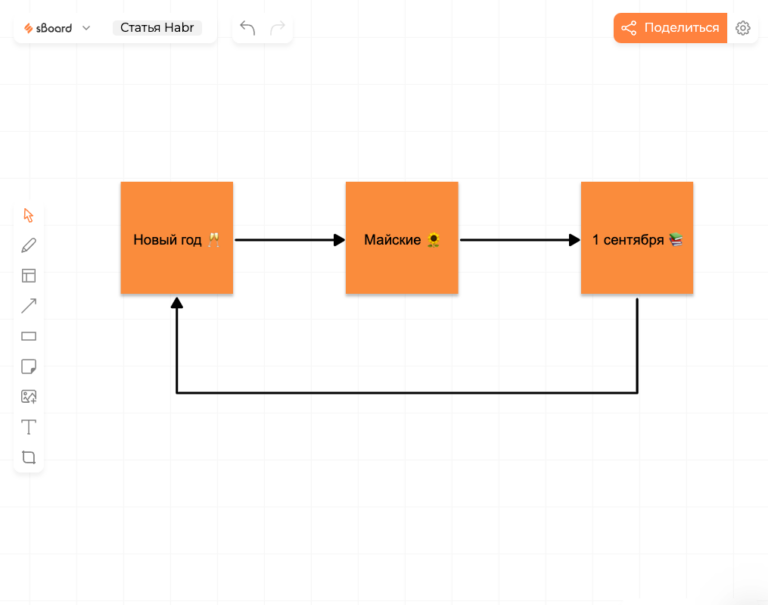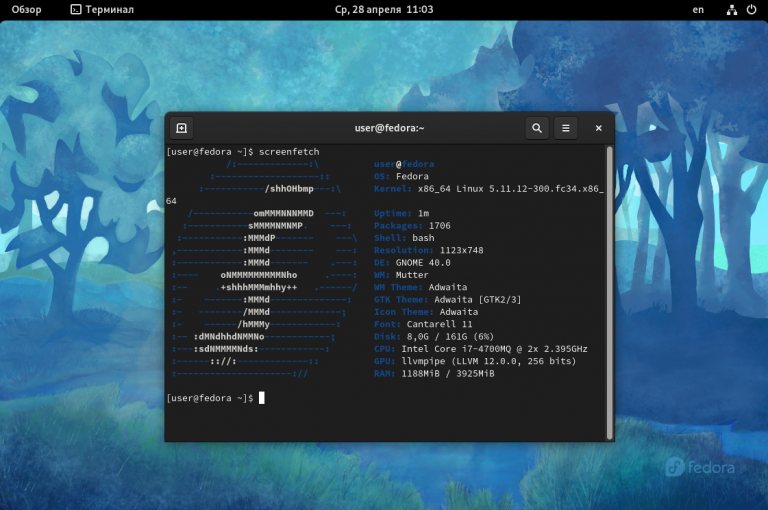Mercury, spring 2023, evening visibility
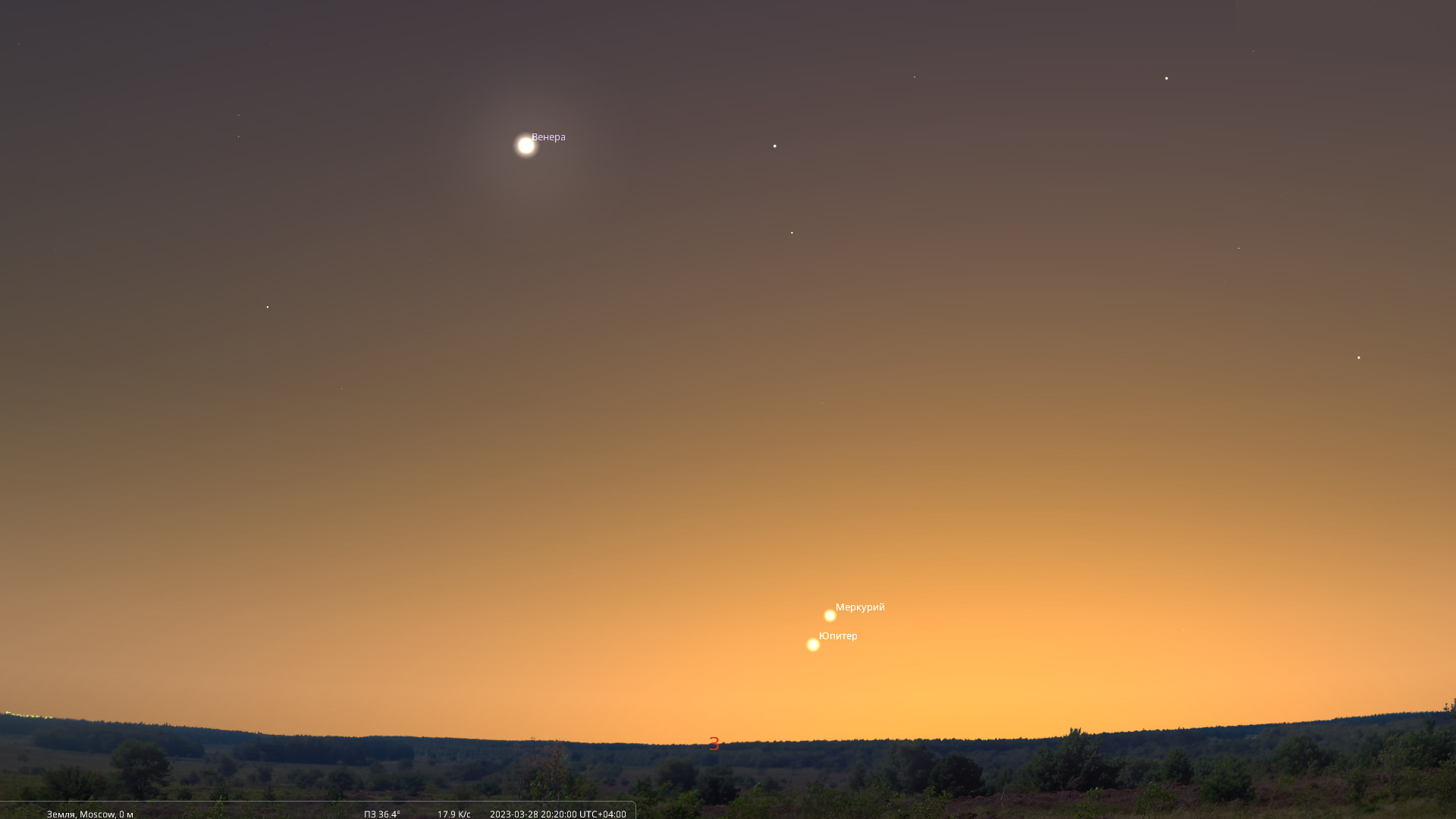
Mercury – inner planet. there are only two such in the solar system – Mercury and Venus – their orbits are located inside the orbit of the Earth (hence the name in the classification). The remaining planets – from Mars and further to the outskirts – are external. The earth, alas, is outside of both classes. But for those of our brethren who will move to Mars in the near future, the Earth will turn out to be an inner planet, and will be visible from the surface of the red planet only after a greenish sunset, or shortly before a greenish Martian dawn, which is equally unusual for us.

Will Mercury be visible from Mars? If it does, it will be with great difficulty, because even from the Earth it is barely perceptible, and from a distance of a distant Martian orbit it will visually be one and a half times closer to the Sun – it will practically merge with its radiance.
Therefore, we will not rush to fly to Mars. We will find out how and when Mercury will be visible in the spring of 2023.
On March 16, 2023, Mercury passed superior conjunction with the Sun. And for two weeks I got out because of it, catching up with the Earth in orbital motion, because Mercury is the fastest planet.

Top connection – an astronomical term that arose historically. It means only one thing: the Earth, the Sun and the planet (in this case, Mercury) are located on the same straight line, and both planets (Earth and Mercury) are on opposite sides of the Sun. In the Middle Ages, the layout of the planets was hung on the wall in such a way that the Sun was located above the Earth, and the planet passing through the described configuration turned out to be even higher – above the Sun. Hence the name.
If the planet was on the same straight line with the Sun and the Earth – between them and below the Sun, then this configuration is called Bottom connectionbecause the planet was under the Sun. But there are only inner planets in inferior conjunction.
Back to Mercury
By the last days of March, the angular distance of Mercury from the Sun will be sufficient to find it in the light of the evening dawn. Success is greatly facilitated by the fact that in the spring evening the ecliptic (an imaginary line on a no less imaginary celestial sphere along which the Sun, the Moon and all the planets move) rises steeply above the horizon. And Mercury will not be away from the place where the Sun sets above the horizon, but in fact directly above it – high enough above the horizon, where the light of dawn has already begun to fade, and there Mercury can be seen without much difficulty.
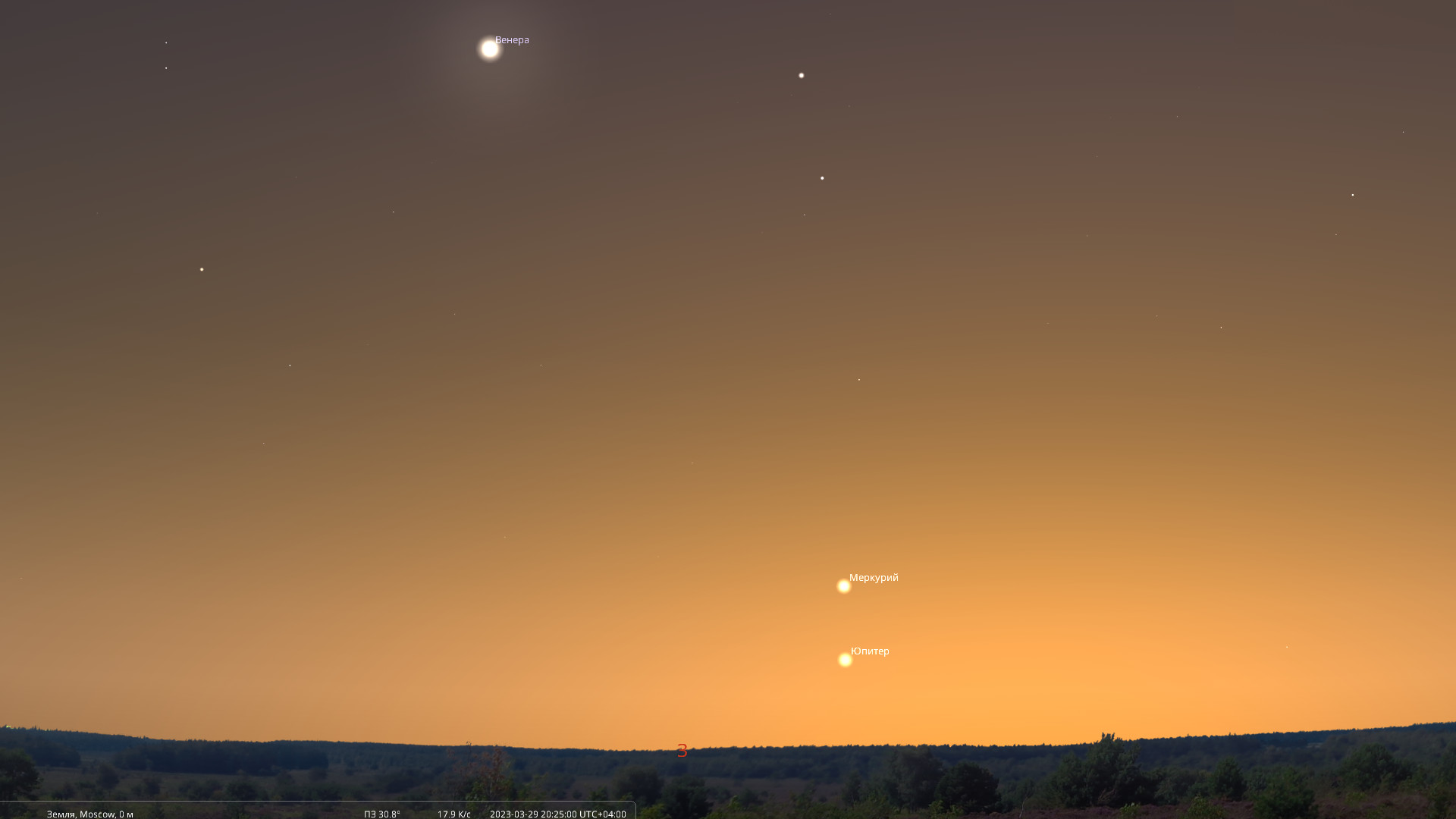
You can start looking for Mercury as early as 15 minutes after sunset. In Moscow it is approximately 19 hours 15 minutes or a few minutes later.
It may happen that you see a spark lost in the dawn, but it will not be Mercury. In the same region of the sky, Jupiter is also now – brighter. But now Mercury is already higher than Jupiter, by the end of March Jupiter will finally disappear into the dawn. You won’t see it today, tomorrow, the day after tomorrow, which means you won’t see it until the beginning of its morning visibility in May. Because already on April 11, Jupiter will be in superior conjunction with the Sun.
Mercury, on the contrary, will run away from the Sun, moving away from it to the east more and more every next evening, and the conditions for the visibility of Mercury will improve.
On April 1, the duration of the visibility of Mercury will reach 1 hour – this is a lot for Mercury. But this is only the beginning of evening visibility. The brightness of the planet exceeds -1m.
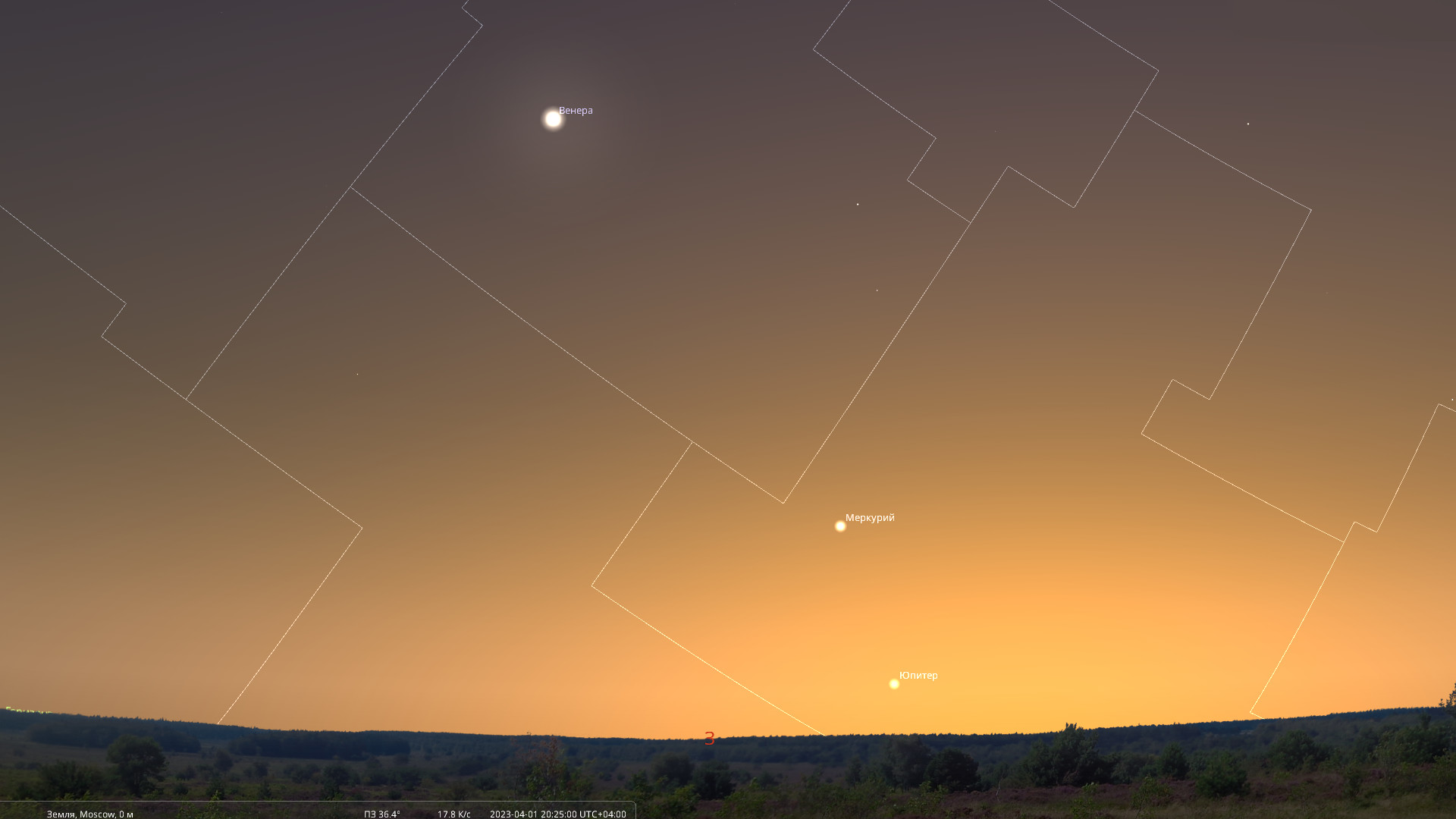
High in the sky above Mercury, but much to the east (to the left), a very bright Venus shines. Mercury, of course, never happens like this, but nevertheless it is in the first days of April that it is most noticeable.
On April 3, Mercury will move into the Constellation of Aries (before that it was in the same constellation with the Sun – in Pisces), and for several evenings it will move in the same constellation with Venus and Uranus. With binoculars above Mercury, you can find the two main stars of the constellation Aries – Alpha Aries “Gamal” and Beta Aries “Sheratan”.
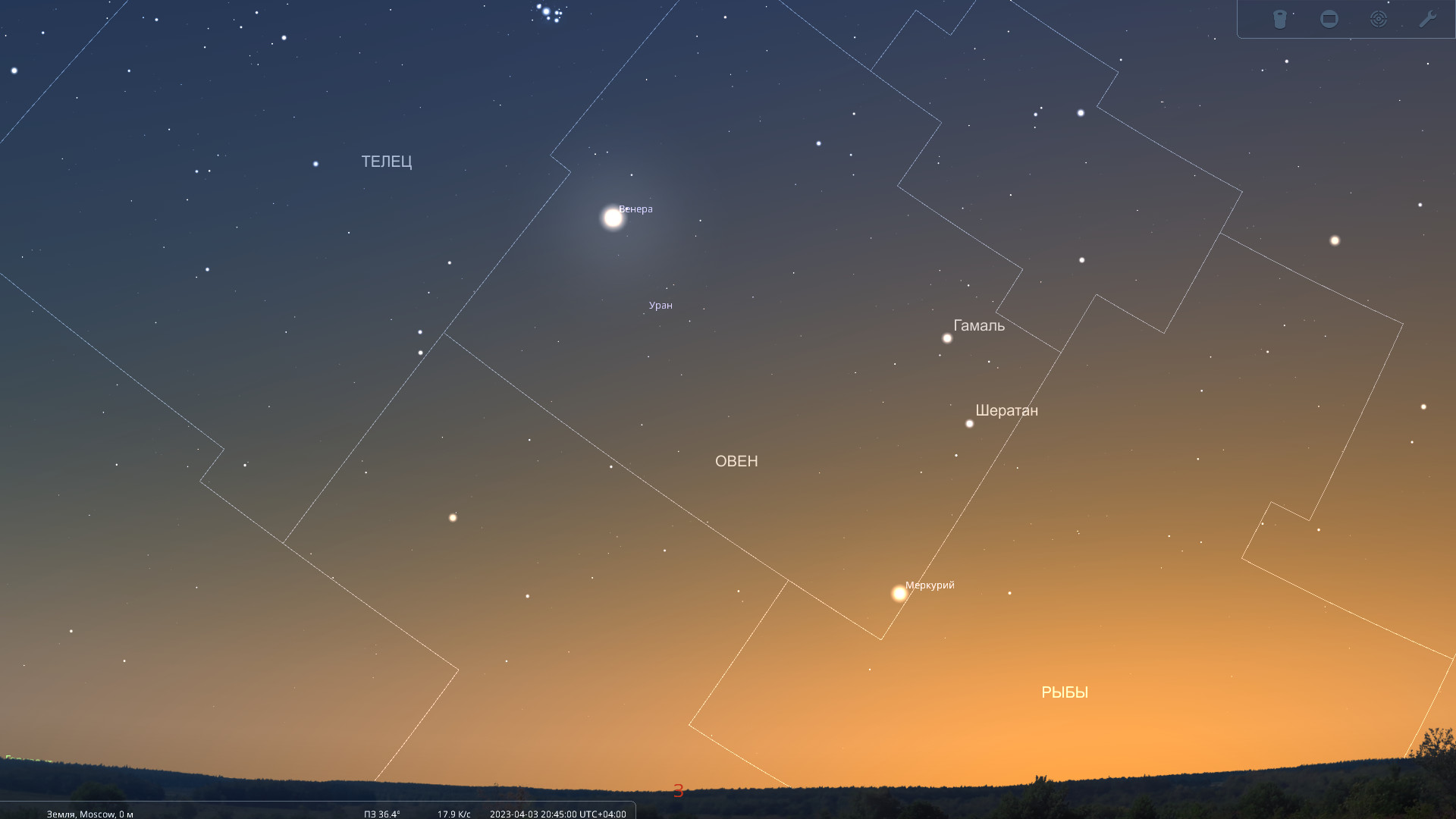
On April 7, Venus leaves the constellation Aries, and Mercury and Uranus remain in it together. The brightness of Mercury is slowly decreasing, and will be about -1.5 m on these evenings – still quite high.
On April 11, being in the central part of the constellation Aries, Mercury will reach its greatest eastern elongation – 19.5 °.
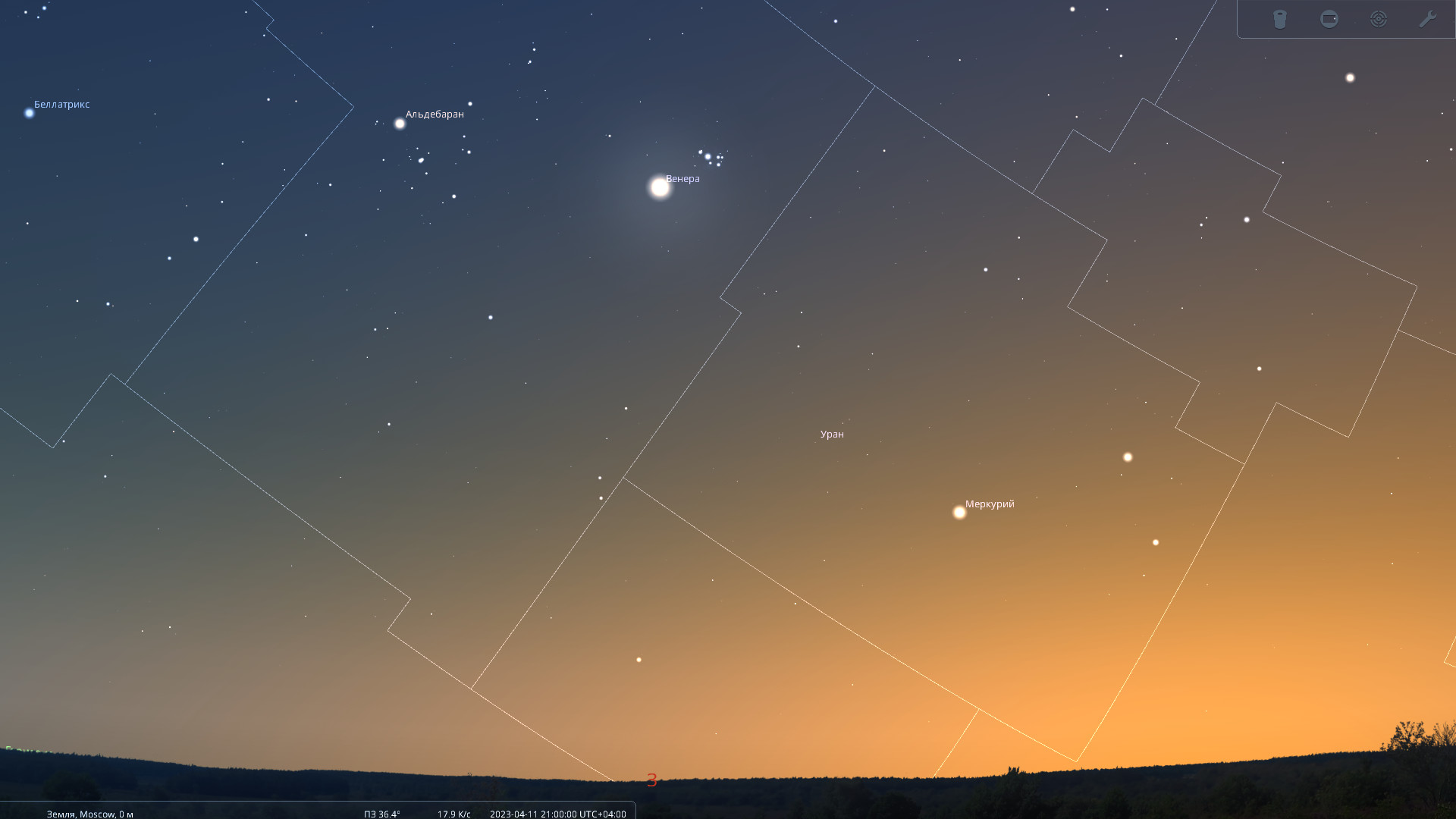
Greatest eastern elongation – a special configuration of a celestial body in relation to the Earth and the Sun, in which for an earthly observer the angular distance of this celestial body from the Sun is maximum, and the celestial body is located east of the Sun.
The inner planets (Mercury and Venus) and small celestial bodies – asteroids and comets, whose orbits penetrate into the Earth’s orbit, can reach the greatest eastern (and western – too).

Mercury never moves further than 27 degrees from the Sun. Its orbit is an ellipse with significant eccentricity (elongation) for planets. Therefore, in different periods of visibility, the maximum angular distance of Mercury from the Sun is different. This spring it will be limited to only 19.5 degrees – yes – a little. But for Mercury it is also very important how much its declination exceeds the declination of the Sun.
declination – the celestial coordinate in the equatorial coordinate system, which is a value expressed in degrees, how far the luminary is removed from the celestial equator – north or south. Distance from the celestial equator to the north is considered positive. Celestial bodies with a positive declination are located in the northern celestial hemisphere, and – it can be concluded – are better visible from the northern hemisphere of the Earth.
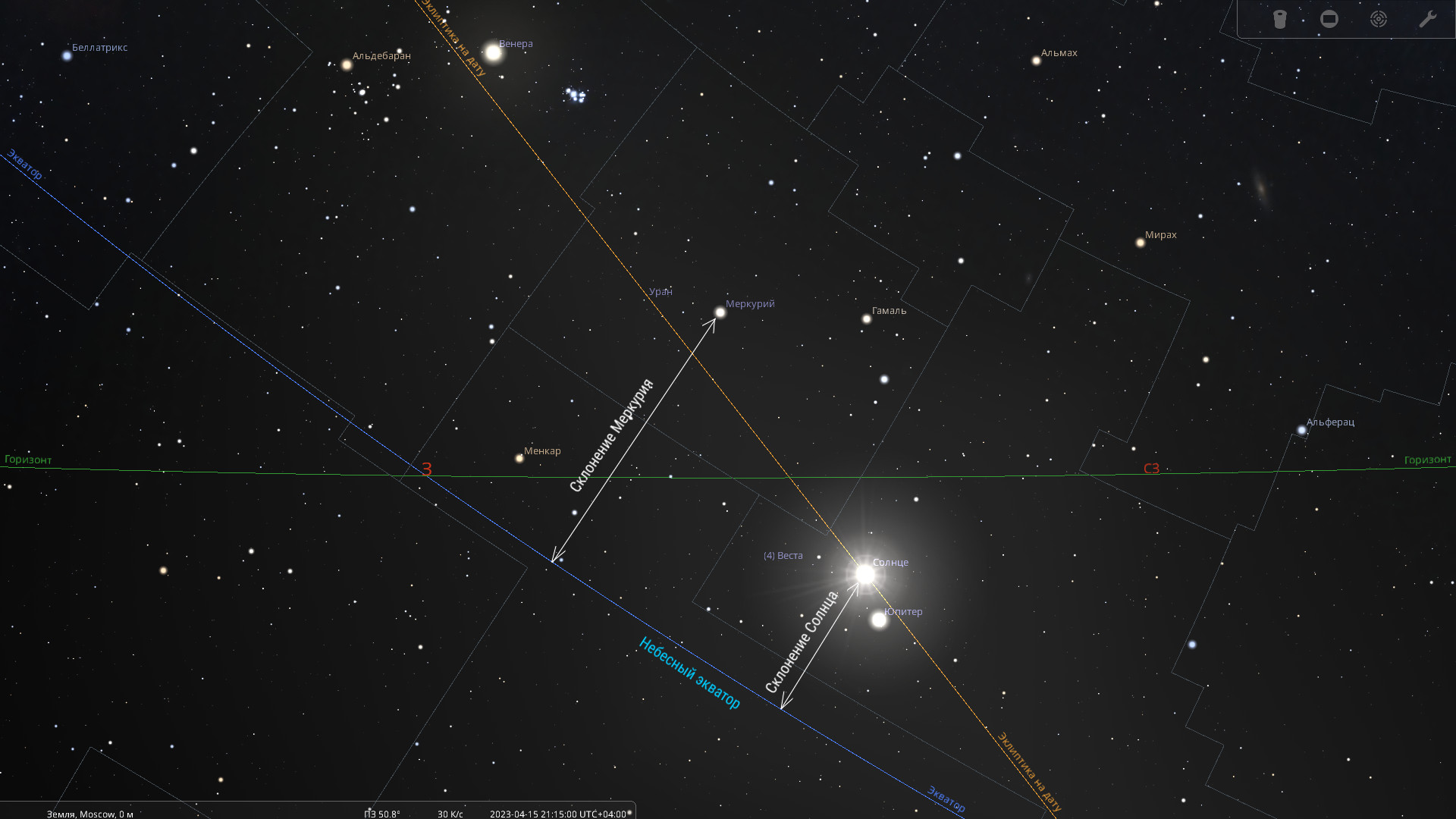
Recently, the Sun crossed the celestial equator – the spring equinox happened. The declination of the Sun has become positive, and now it only increases with each passing day. But Mercury is now “running” ahead of the Sun, and its declination is already much higher than the Sun’s – Mercury is located much deeper in the northern celestial hemisphere, and when the Sun has already set, Mercury remains above the horizon for a long time – largely due to its higher declination.
On dates around April 11, the evening visibility of Mercury will significantly exceed an hour and a half, which is out of the ordinary for Mercury.
On the same evenings, Venus will pass 2 ° south of the Pleiades open star cluster in the constellation Taurus – there will be something to see besides Mercury. And Mercury – starting from April 12 – will begin to approach the Sun. It will start slowly, but with increasing pace.
Until mid-April, the evening visibility of Mercury still exceeds an hour and a half (up to two hours in locations slightly north of Moscow). But in its movement across the celestial sphere, Mercury will begin to slow down, allowing the Sun to catch up with it.
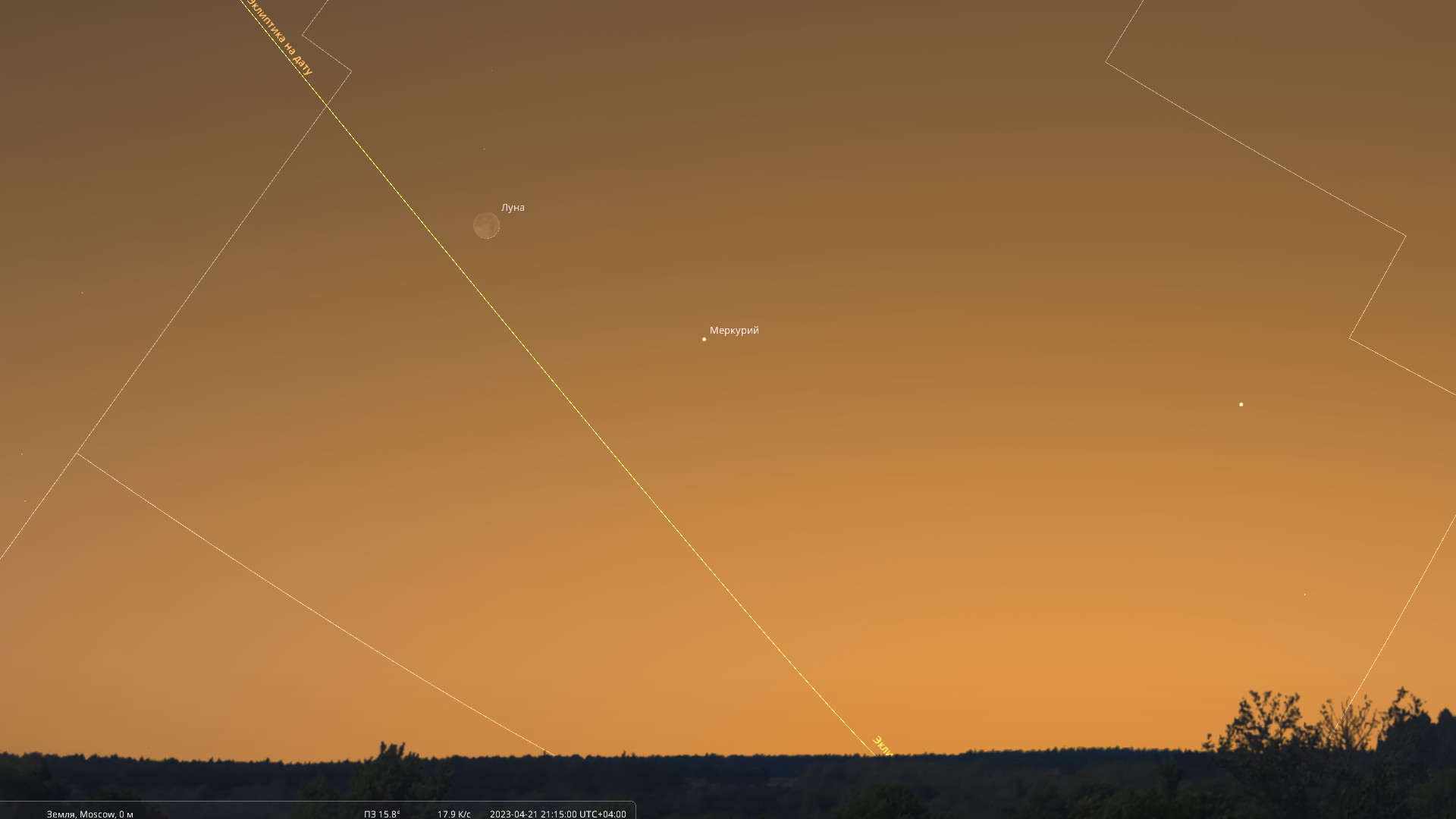
Mercury will stand on April 21st. Astronomers often specify: Standing in right ascension. Mercury will stop in its illusory motion against the background of the stars. Of course, its orbital speed will still be about 48 km / second – the movement of Mercury in orbit around the Sun is never interrupted.
right ascension – celestial coordinate in the equatorial coordinate system, which determines the distance of the luminary from the vernal equinox, measured along the celestial equator. As you might guess, the vernal equinox in astrometry is the beginning of all beginnings. And this removal of Mercury from the TVR will begin to decrease – it will turn its movement back – towards the Sun. In astronomy, such a movement of celestial bodies is called retrograde, and astrologers immediately recall that Mercury suddenly became retrograde.
On the evening of April 21, a few degrees east of Mercury, you can try to find in the bright light of dawn the thin newborn Moon. The phase of the moon will be only 2.7% and if someone manages to notice it, consider that you are a very experienced observer.
At 4 ° east of Mercury (in fact, between Mercury and the Moon), on the evening of the date of its standing, Uranus will be – it would seem – very close. But Mercury will not catch up with him, because he goes in the opposite direction.
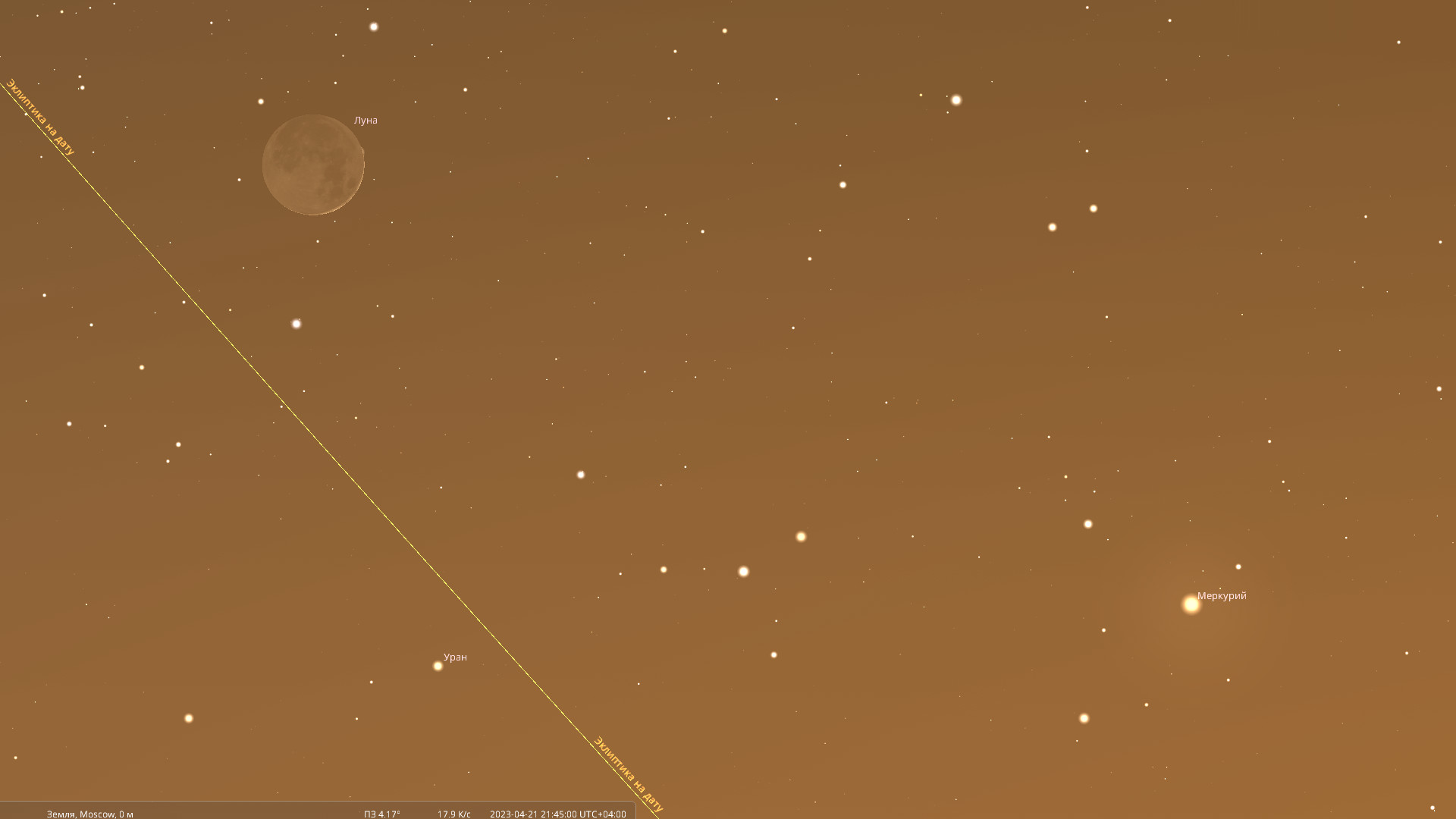
Evening visibility will be reduced to one hour by the time of standing, which is still significant for this elusive planet. But the brilliance will significantly weaken – up to +2.5m. And although Mercury is relatively close to the Earth these days, it faces the observer with its dark hemisphere, and its view through a telescope resembles a very thin young Moon. On the other hand, the apparent size will grow to 10” arc, which is close to the maximum value for Mercury.
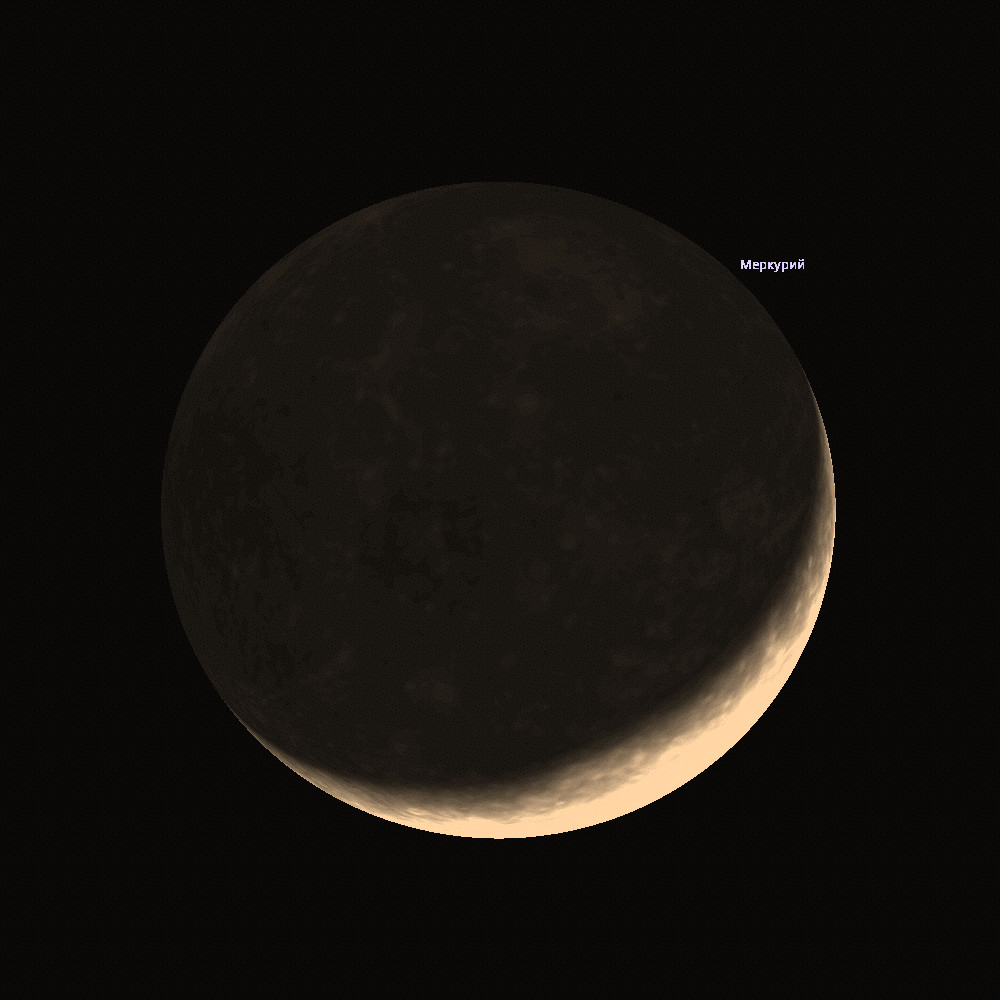
After a couple of days, the evening visibility of Mercury will stop.
On April 25, the elongation will be reduced to 10 degrees, and the apparent brightness will drop below 3.5m – it will be difficult to see such a faded celestial object in the bright light of dawn, even through optics.
On May 1, Mercury enters inferior conjunction with the Sun. Due to the fact that the orbit of Mercury has a significant inclination to the plane of the Earth’s orbit, it will not pass through the disk of the Sun. The transit of Mercury across the disk of the Sun is a relatively rare phenomenon, and the next one will occur on November 13, 2032. And this time, Mercury will slip 1° north of the daylight.

In the month of May 2023, Mercury will be located to the west of the Sun, and theoretically the period of its morning visibility will begin. But it will be good only for observers located in the southern hemisphere of the globe and its equatorial latitudes. In the northern hemisphere of the Earth in spring, morning visibility passes under unsatisfactory conditions – the planet at dawn is located very low above the horizon and rises almost simultaneously with the Sun.
